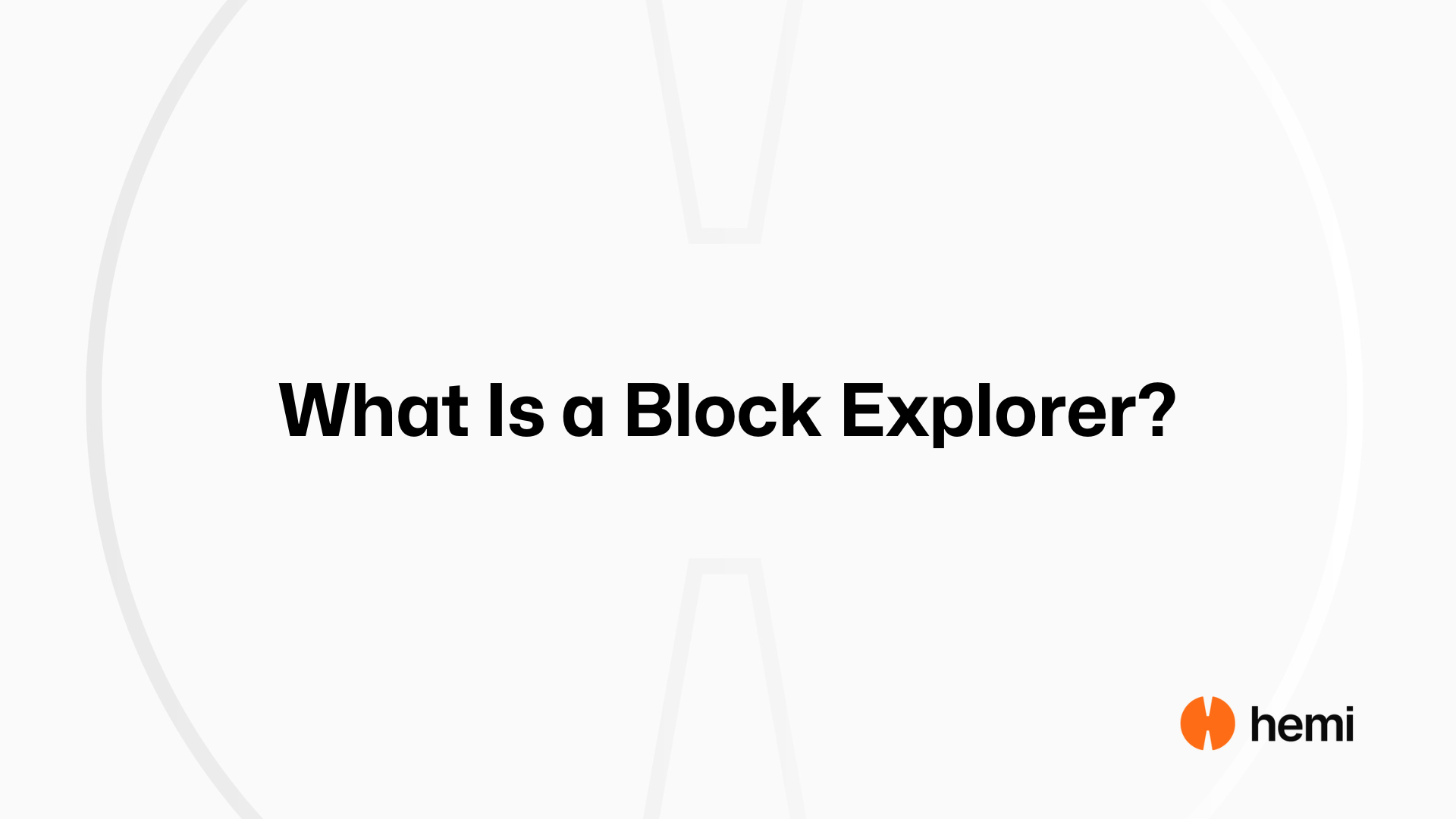- Bitcoin
- Ethereum
- Learn Center
- May 1, 2025
What Is a Block Explorer? Understanding Crypto Explorers and How They Work
Block explorers help you view blockchain transactions in real time.

A block explorer, often called a crypto explorer, is a web-based tool that lets you examine transactions on a blockchain in real time. Think of it as a search engine for blockchain data. It allows users to type in a wallet address, a transaction ID, or a block number into a search bar to view detailed transactional data. This includes the amount sent, the wallet balance involved, transaction fees, timestamps, and the transaction status of each entry.
Each time a new transaction is made on a blockchain network, it gets recorded into a block. Once confirmed, this block transaction becomes part of the permanent ledger. A blockchain explorer reads this public data and presents it in a user friendly format so anyone can track the movement of digital assets, review transaction history, and monitor overall transaction volume.
Using a block explorer, you can search for a specific transaction by pasting its transaction ID into the search bar. The explorer will return full details, including sender and receiver wallet addresses, the value transferred, the time it was processed, and the miner fee. You can also look up any wallet address to see its wallet balance and list of past transactions, creating a full picture of its activity on the blockchain.
For more advanced users, a block explorer offers insight into the performance of the network itself. It can show the latest blocks being mined, the number of confirmations each transaction has, and the overall hash rate, which reflects the computing power securing the blockchain. Some explorers also show unconfirmed transactions in real time, helping users follow how quickly the network is processing activity.
Blockchain explorers are widely used by traders, developers, researchers, and casual users alike. Traders use them to confirm whether transfers went through and to track transaction fees across time. Developers rely on them to audit transactional data, troubleshoot issues, and verify how smart contracts are functioning. Researchers analyze transaction volume and patterns over time to study market behavior.
Each major blockchain has its own explorer. Ethereum users often rely on Etherscan to inspect transactions and blocks. Bitcoin users may turn to tools like Blockstream Explorer. These platforms differ slightly in interface but all serve the same goal: enabling users to access public blockchain data in a readable way.
In short, a crypto explorer provides a live window into how a blockchain network is functioning. Whether you’re checking a wallet balance, reviewing transaction history, analyzing transaction volume, or just trying to confirm the status of a specific transaction, a block explorer is your go-to tool. It turns raw blockchain data into understandable information, making the technology more transparent and accessible to everyone.